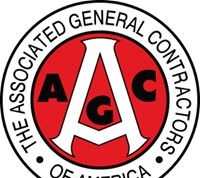NAIOP opinion editorial featured across the U.S.
WASHINGTON, D.C. – (RealEstateRama) — The following opinion editorial was written by Thomas J. Bisacquino, NAIOP president and CEO, and has appeared in newspapers across the U.S. Tax reform is a priority issue for NAIOP and commercial real estate. The piece reads as follows:

A tax code is simply a set of rules that drive and influence economic behavior. Done wrong, tax policy can have disastrous consequences. That happened with commercial real estate after the 1986 Tax Reform Act. That experience highlights the importance of not only getting the policy right, but of providing a well-designed transition to the new code.
Last year, development, construction and operation of office, industrial, warehouse and retail properties supported some 6.25 million American jobs and contributed $861 billion to U.S. GDP. We need to avoid policies that harm the CRE industry.
Today, Congress has the rare opportunity to rewrite our nation’s tax code in a way that promotes growth for all American businesses. The framework agreed to by the Trump administration and Republican leaders in the House and Senate envisions simplification of our code for the average taxpayer, cutting the number of tax brackets from seven down to three and doubling the current standard deduction for individuals and joint filers. Simplification is good, but even more important is to usher in tax policies that foster long-term investment that will lead to stronger economic growth. The framework would do that in several important ways.
First, many small-businesses are organized as partnerships or limited liability companies. This is particularly true in the commercial real estate industry. In these so-called “pass-through” business, owners pay taxes on the income from the business on their personal tax returns, at the individual ordinary income tax rate which can be as high as 39.6 percent. The framework proposes a new lower business lower income tax rate for these business of 25 percent. That would spur economic activity, investment, and job-growth. Of course, care must be taken so people do not game the system by characterizing personal income as “business income” to pay the lower tax rate, but the framework specifically charges the tax committees to provide for such protections.
Second, the proposal would allow businesses to deduct the full cost of their investments in the first year, rather than deducting a smaller percentage from their taxes as depreciation over many years. Structures are not included in this “full expensing” regime, and we think that is wise because we do not want tax-driven real estate development that doesn’t reflect or outpaces the actual demand in a market. But it does present the industry with an opportunity to modernize the currently outdated depreciation rules governing real estate, which call for depreciation over a 39-year period, by far the longest of any asset class.
In today’s rapidly changing world of commercial real estate, featuring energy-efficiency, co-working space, and “wired” structures, buildings become economically obsolete much sooner than in four decades. The preferences and demands of tenants change far more frequently than that, requiring extensive renovations. That’s why Congress should focus on establishing a more realistic lifespan for commercial property.
Finally, while the framework called for a limitation on the deductibility of business interest that is available to larger corporations, it also allows the tax committees to determine whether this works in other contexts. Because CRE structures are excluded from the new full expensing regime, builders and owners should be allowed to keep the deductibility of the interest they pay on loans. There is no danger here of a “negative subsidy” – the taxpayer being owed money by the government – which might result if deductibility of interest and full immediate expensing were available to a taxpayer. We expect that the committees and the Trump administration will understand and appreciate the importance of financing in commercial real estate.
Of course, further details are still to be ironed out as House and Senate tax committees try to draft legislation over the coming weeks. Long-standing provisions that are key to the efficient operation of modern real estate markets, such as the ability to defer taxes on like-kind real estate exchanges, must be maintained. There have been assurances that adequate transition rules will be provided, in order to avoid any repeat of the 1986 Tax Reform debacle.
The details around tax reform are still scarce, but the early signs, for CRE and the overall economy, are promising.
[Editor’s note: To date, this opinion editorial has been published in Newsday, Frederick News Post, Santa Maria Times, Lompoc Record, and Arcamax.]

















